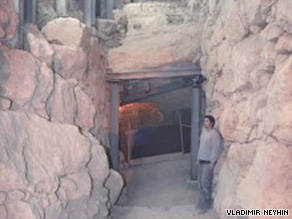Icebear: This is the commentary that Ric Edelman offered on the new Healthcare laws.
Health Care Reform: Life Just Got Harder
The health care bill is now law. As a result, taxes are rising. Many middle-class working Americans will soon incur greater expenses for services they have already been receiving. As a humanitarian, I don’t believe anybody can argue with the principle of providing health insurance to 32 million Americans who have not had access to it. But those benefits have a high cost, and middle-class working Americans will be the ones paying for it.
Let’s take a look at the new taxes that the 2010 health care law has created. Most will be phased in over the next few years and are as follows:
2010
Starting July 1, indoor tanning salons will charge a 10% sales tax.
2011
Pharmaceutical manufacturers will collectively pay a new excise tax, starting at $2.5 billion and rising over time. The drug makers will no doubt pass this new cost onto consumers.
Non-qualified distributions from Health Savings Accounts will be taxed at 20% instead of the current rate of 10%. That’s a 100% tax increase.
2012
Private insurance plans will be forced to pay the government $1 or $2 each year for each participant. If you have health insurance through a private insurance plan, you will likely be required to pay this charge.
2013
Medicare payroll taxes will rise 62% for those earning more than $200,000 a year ($250,000 if you are married filing jointly). The tax on wages in excess of $200,000 (or $250,000) is rising from 1.45% to 2.35%. That’s an additional tax of 0.9%, or a 62% increase.
There will also be a new 3.8% tax on gross investment income for those earning more than $200,000 ($250,000 for married filing jointly). “Investment income” includes interest, dividends, capital gains, rental income, annuities and royalties. In addition to this new tax, capital gains taxes are set to rise in 2011 from 15% to 20% — that’s a 33% increase. Therefore, for people who are making over $200,000 a year ($250,000 if you are married filing jointly), the total tax on capital gains is jumping from 15% to 23.8%. That’s a 59% increase.
Medical device manufacturers must collect a new national sales tax of 2.9%. You will directly pay this tax, but it will not apply to eyeglasses, contact lenses or hearing aids.
Employers will no longer receive a subsidy for providing retiree prescription drug coverage. Companies will pay more to provide such benefits as a result (AT&T has already announced that it will pay $1 billion in new taxes annually because of this provision). Similar announcements have been made by John Deere ($150 million), Caterpillar ($100 million), 3M Company ($90 million) and AK Steele ($31 million), and many more companies in the Fortune 500 are expected to make similar announcements soon. It is widely expected that Corporate America will pass these costs onto consumers in the form of higher prices for their goods and services, reduce the benefits they provide to their retired employees (who will in turn be forced to pay higher health care costs) or both.
You will not be able to deduct medical expenses on your tax return until you’ve spent 10% of your Adjusted Gross Income. Currently, you can begin deductions after you spend 7.5% of your AGI. Therefore, this is a 33% increase in the threshold.
Contributions to Flexible Spending Accounts will be capped at $2,500 per year, and you will no longer be able to use the money to buy over-the-counter drugs. This change will cause some taxpayers to pay as much as several thousand dollars more in health care expenses and in annual income taxes.
If you’re an executive in the health insurance industry and earn more than half a million dollars a year, taxes will effectively double for all of your income above $500,000.
2014
Employers with more than 50 employees that do not provide health insurance to their employees will pay a $2,000 penalty per employee per year, starting with the 31st employee.
If you do not have health insurance, you and each member of your household will pay a new tax of 1% of household income (at least $95 per person per year). This tax will rise to 2.5% per year (at least $695 per person) by 2016.
2018
Health insurance plans that cost more than $10,200 for individuals ($27,500 per family) will pay a new 40% tax on any coverage that exceeds the limit. Plan sponsors will no doubt pass this cost along to you.
In addition to these new taxes, the new health care law cuts federal funding of Medicare by $500 billion over the next decade. The states will find themselves forced to deal with this cutback, and they will have little choice but to increase state income taxes, force Medicare patients to pay more of their health care costs, or both.
Medicare is not the only entitlement program likely to see cuts. According to the Congressional Budget Office, 2010 will be the first year that Social Security pays out more in benefits than it collects in payroll taxes. This was not expected to occur until 2016. Based on current projections, Social Security will be broke by 2037 unless changes are made. That means taxes will rise, and benefits will be delayed or reduced, or all three.
Retirees are already feeling pressure. There was no cost of living adjustment (COLA) for Social Security in 2010, and none is expected for 2011 either. This represents a net decrease in income for retirees, because Medicare taxes continue to rise despite the fact that there is no offsetting increase in Social Security benefits.
Meanwhile, the Center for Retirement Research at Boston College released a study in March 2010 showing that married retirees who are both 65 years of age and currently free of chronic disease will spend $197,000 on health care during retirement. And a 2008 study from the Schwab Center for Financial Research says that one-third of baby boomers are currently providing financial assistance to parents, and 50% are providing support to children, proving that millions of Americans are true members of the so-called “Sandwich Generation.”
All these statistics help explain why 84% of Americans say they are not confident that they will ever be able to retire, according to the Employee Benefit Research Institute’s 2010 Retirement Confidence Survey.











